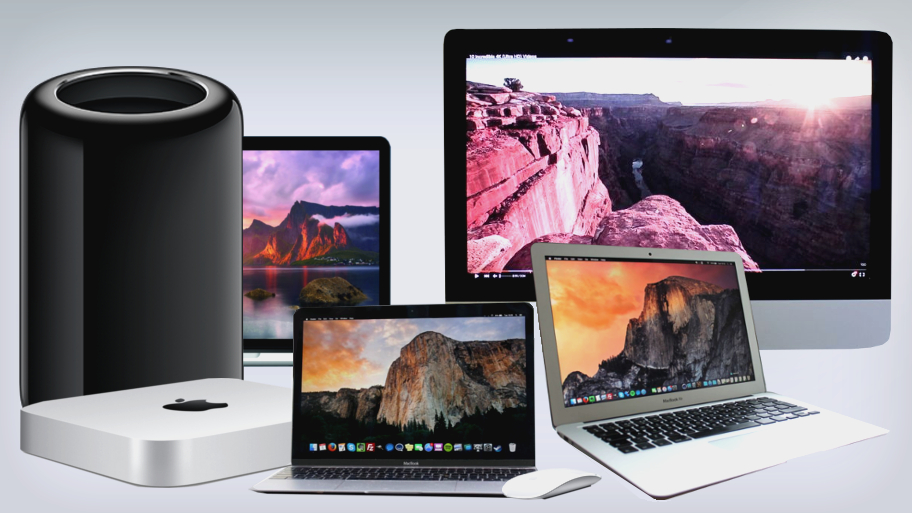
Picking the perfect Mac
Buying a new Mac isn’t as easy as picking out a new iPhone. With a phone you only have to worry about cost, color, and capacity, but when upgrading your computer you need to consider portability, power, speed, storage, screen size, pixels, expansion needs and more.
So while Apple’s Mac lineup is fairly streamlined and straightforward, there’s still a lot to consider. If you decide you want a desktop, there’s the Mac mini, iMac and Mac Pro to choose from.
If portability is your primary concern, you have the 12-inch MacBook, MacBook Air, MacBook and MacBook Pro. Even if you pass on the build-to-order options, there are dozens of possibilities ranging from $499 (about £325/AU$646) all the way up to $3,999 (about £2,610/AU$5,181).
A new Mac is a long-term investment. You don’t want to be stuck with the wrong one for years and years, so we sorted through every option for every model to help pair you with your perfect match. Head to the next page as we dive right in.

1. Mac Pro
A cylindrical tower of power
CPU: Up to 3.0GHz 8-core processor with 25MB L3 cache or 2.7GHz 12-core processor with 30MB L3 cache | Graphics: Up to dual AMD FirePro D700 GPUs with 6GB of GDDR5 vRAM each | RAM: Up to 32GB (four 8GB) or 64GB (four 16GB) of DDR3 ECC memory | Storage: 256GB PCIe-based flash storage (configurable to 512GB or 1TB) | Communication: Ethernet, Fast Ethernet, Gigabit Ethernet, IEEE 802.11b, IEEE 802.11a, IEEE 802.11g, IEEE 802.11n, Bluetooth 4.0, IEEE 802.11ac | Dimensions (WxDxH): 16.7cm x 16.7cm x 25.1cm
Stellar design Twin GPUs Expansion ports Internal expansion lacking No bundled keyboard or mouse
The Mac Pro was cutting-edge when it launched in late 2013, and it’s still one of the most advanced PCs money can buy – though an update wouldn’t go amiss.
The new design, which made the machine much smaller and compact, introduced Thunderbolt, the high-speed connectivity option to the desktop, and a range of other high-end features that users wanted.
The most expensive Pro model can have a 12-core processor, 64GB of RAM, and 4 terabytes (4,000GB) of SSD storage without breaking a sweat. From here, users can add their own graphics cards, more memory, and run four displays.
The machine has power and performance to spare, with quad-core Intel Xeon E5 processors, dual AMD FirePro graphics cards, and super-fast PCIe-based flash storage. And its distinctive 9-inch-high cylindrical form fits great on any desk.
Of course, the Pro’s price tag matches its performance – ranging from $2,999 (£2,499/AU$4,399) to around $10,000 depending on your storage, memory and processing needs – but it’s as future-proofed as any Mac you’ll find.
Even if OS X were to transform into some kind of a Multitouch hybrid in five years, today’s Mac Pros will surely be able to handle it.
What’s next for the Mac Pro?
The Mac Pro, unlike all of Apple’s other desktops or laptops, is meant to be played with, expanded, and customised by people who work in film or music studios. Because of this, the Pro is unlike any of Apple’s other machines and, as such, doesn’t get updated as often by the company.
Apple has been under pressure to update the Mac Pro in recent times, however, as the iMac becomes more and more powerful. The next version of the Pro will most likely not come in 2016, however.

2. 27-inch iMac with 5K Retina display
Apple’s biggest iMac puts everything on display
CPU: Up to 3.3GHz Quad-Core Intel Core i5 (Turbo Boost up to 3.9GHz) | Graphics: Up to AMD Radeon R9 M395X with 4GB of GDDR5 memory | RAM: Up to 32GB of 1867MHz DDR3 memory; four SO-DIMM slots, user accessible | Storage: Up to 1TB of flash storage (SSD) | Communication: 10/100/1000BASE‑T Gigabit Ethernet (RJ-45 connector) | Dimensions (HxWxD): 51.6cm (20.3 inches) x 65cm (25.6 inches) x 20.3 cm (8 inches)
See more 27-inch iMac with 5K Retina display deals
Display Performance Core i7 costs extra No Traget Display Mode
If you want the big screen of an iMac with the precision of a Retina display then there’s only one iMac for you: the iMac with 5K Retina display. It comes with a choice of two quad-core Intel Core i5s at 3.3GHz and 3.5GHz respectively, a 1TB hard drive or Fusion Drive, and it’s so pretty we want to marry it.
If you’re dropping more than a grand and a half on an iMac you might as well go the whole hog and get the faster, Fusion Drive-packing model, packing a 5K Retina Display, 3.5GHz processor and Fusion Drive for £1,849 ($2,299).
If you can’t afford or don’t want the Retina iMac, you can pick up a new iMac from as little as £899 ($1,799) for the 21.5-inch model. The sweet spot is in the middle of the range: choosing the £1,049 ($1,999) model over the £899 one nearly doubles the processor speed, doubles the storage and gives you a better graphics system too.
What’s next for the 27-inch iMac with 5K Retina display?
Apple is unlikely to change anything big on the 27-inch iMac with 5K Retina display in 2016, making way for other models—like the Pro or Mini—to get the limelight.
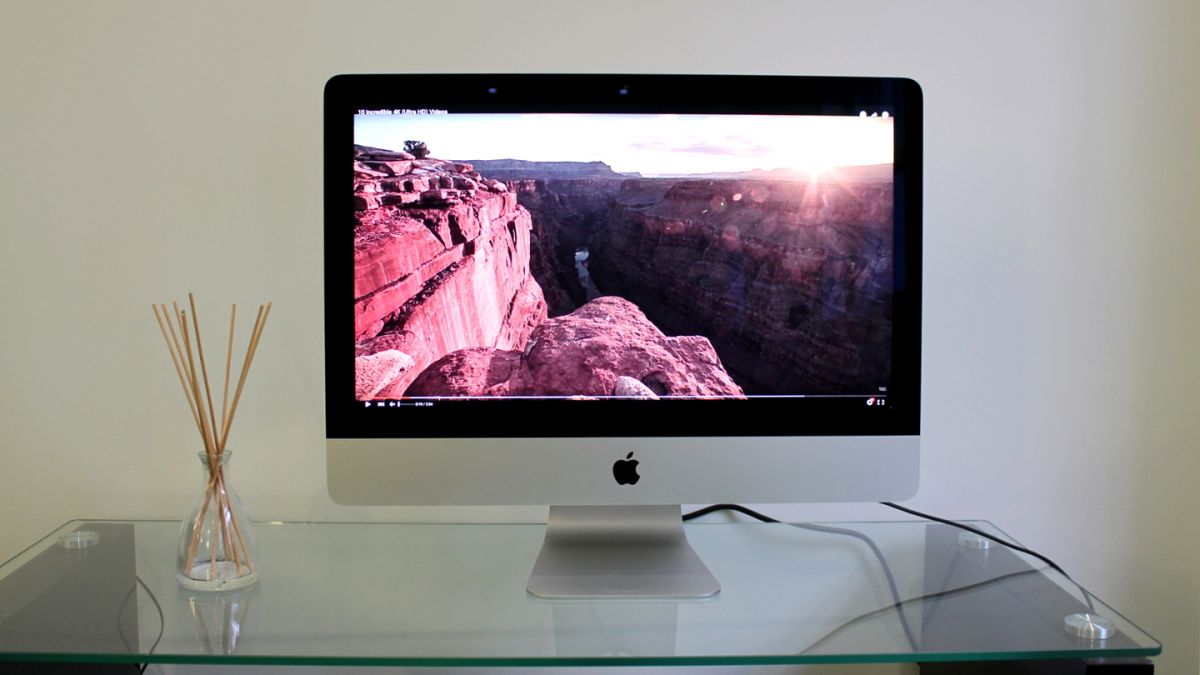
3. 21.5-inch iMac with 4K Retina display
A gorgeous 4K display on a compact all-in-one
CPU: Up to 4.0GHz Quad-Core Intel Core i7 (Turbo Boost up to 4.2GHz) | Graphics: Up to AMD Radeon R9 M395X GPU with 4GB of GDDR5 memory | RAM: Up to 32GB of 1867MHz DDR3 memory; four SO-DIMM slots, user accessible | Storage: Up to 1TB of flash storage (SSD) or 3TB Fusion Drive | Communication: 10/100/1000BASE-T Gigabit Ethernet (RJ-45 connector) | Dimensions (WxDxH): TKTK
See more A gorgeous 4K display on a compact all-in-one deals
Display Design Fusion drive not standard Chunky display bezel
If 27 inches is too much for you, Apple’s 21.5-inch 4K iMac is much smaller but packs and equally sharp display. It goes toe-to-toe with the 27-inch 5K iMac’s when it comes to pixel density, and it similarly supports the DCI P3 colour gamut that allows for accurate, vibrant colour.
The 4K iMac starts at £1,199 ($1,499) and can be upgraded with features such as a faster processor, more RAM and faster (and more capacious) storage.
It’s not that much more affordable than the entry-level 27-inch iMac once you’ve ramped up the configuration, so it’s worth bearing in mind whether spending the extra money would be worth getting hold of a larger display and much more powerful graphics capabilities.
If they aren’t important, Apple’s smaller iMac is still a capable machine and packs one of the best 4K screens around.
What’s next for the 21.5-inch iMac with 4K Retina Display?
As with the 5K iMac, it’s highly unlikely that Apple will launch a new 4K model in 2016. It will, however, benefit from an upgrade to OS X 10.12, OS X El Capitan‘s successor, which is likely to launch around October.
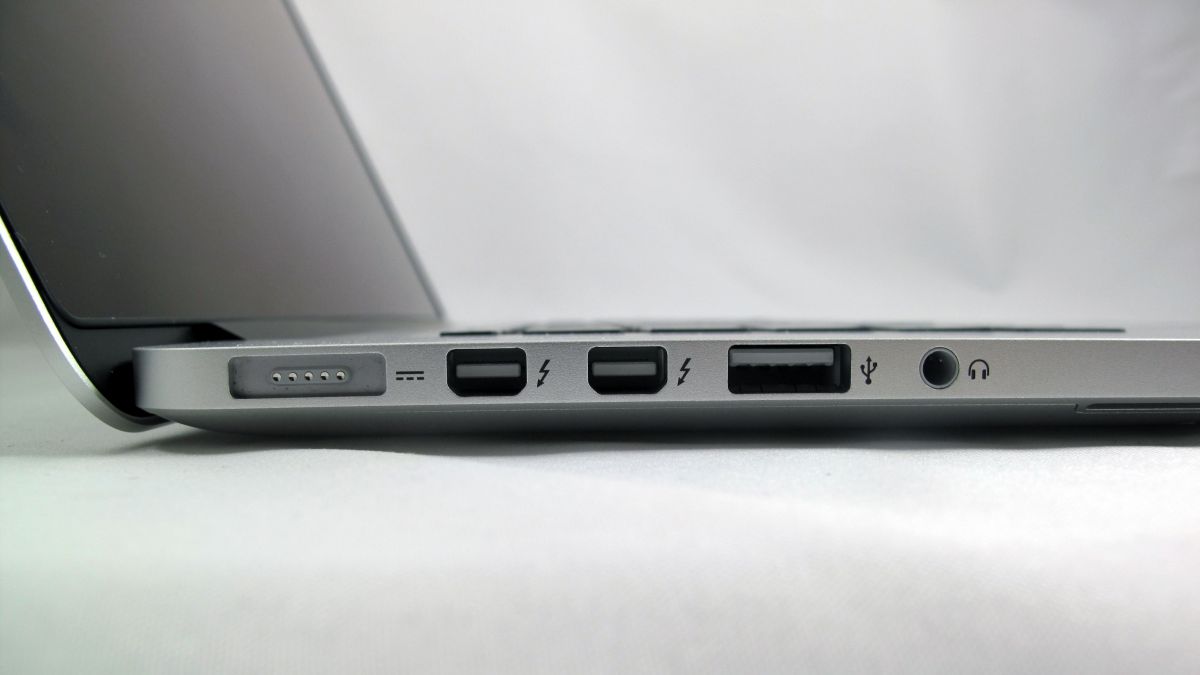
4. 15-inch MacBook Pro with Retina
Due a redesign, but still the most capable MacBook
CPU: Up to 4.0GHz Quad-Core Intel Core i7 (Turbo Boost up to 4.2GHz) | Graphics: Up to AMD Radeon R9 M395X GPU with 4GB of GDDR5 memory | RAM: Up to 32GB of 1867MHz DDR3 memory; four SO-DIMM slots, user accessible | Storage: Up to 1TB of flash storage (SSD) or 3TB Fusion Drive | Communication: 10/100/1000BASE-T Gigabit Ethernet (RJ-45 connector) | Dimensions (WxDxH): TKTK
See more 15-inch MacBook Pro with Retina deals
Display Performance Chunky and heavy Poor keyboard
The name may suggest a high-priced machine, but the MacBook Pro is far more affordable than the desktop tower that shares its surname. If you’re looking for more of a desktop replacement than a road companion, it’s definitely the way to go.
We don’t recommend the cheapest model, however. While it does have a zippy 2.5GHz i5 processor, we aren’t wowed by the laptop’s 13-inch non-Retina screen, 5400-rpm hard drive and 7-hour battery life. At $1,099 (£899/AU$1,549), we’d either get the upper-end Air for the same price or chip in another $200 to go Retina.
The extra money also buys double the RAM, three additional hours of battery life, a Force Touch trackpad, and Iris graphics. You’ll give up quite a few gigs of storage (125GB vs 500GB), but the upgrade to a flash drive makes the tradeoff much more palatable.
You can spend even more for extra storage and a few megahertz, but most users will get what they need for $1,299 (£999/AU1,799). At the very top of Apple’s laptop lineup is the 15-inch model, and it earns its premier spot.
Packed with a 2.2GHz or a 2.5GHz quad-core Intel Core i7 processor, a Force Touch trackpad, and 16GB of RAM, it’s a screamer whether you’re editing videos in Final Cut Pro or making music with Garageband.
Starting at $1,999 (£1,599/AU$2,799), this model is significantly more expensive than its smaller sibling but worth every penny. And the $2,499 (£1,999/AU$3,499) step-up brings more than the usual storage and chip bump; Apple has also crammed in AMD’s Radeon R9 M370X graphics card, which makes this the only laptop advanced enough to power a 5K display.
What’s next for the MacBook Pro with Retina?
2016 will likely be a slower year for the Pro as the other Mac laptops, especially the Air, play catchup. The Pro was the first Apple laptop to get the Retina display in 2012 and has continued to cater to users who want a lot of power on-the-go ever since.
Intel has a new range of processors out, called Skylake, and these may make it into the laptop in 2016. However, Microsoft has had problems with its Surface Book and Pro models—both of which compete with the MacBook Pro—and so Apple may be wary about adopting the chipsets. Over the next year, Intel may figure out the quirks, however.
The competition from Microsoft, among others, may also force Apple to update the Pro quicker, bringing newer and faster components to the laptops as they come out, rather than in the months after. The company is unlikely to switch from its once-yearly schedule for updates, however.
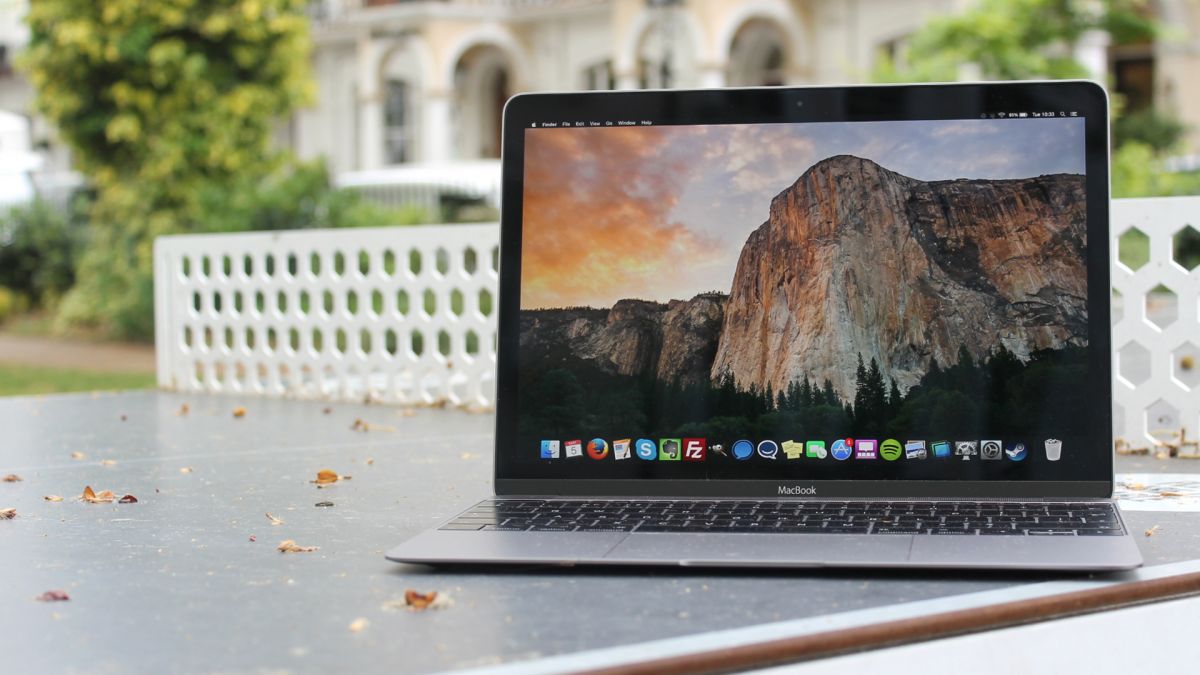
5. 12-inch MacBook
Small, but perfectly formed
CPU: Up to 1.3GHz Dual-Core Intel Core M processor (Turbo Boost up to 2.9GHz) with 4MB shared L3 cache | Graphics: Intel HD Graphics 5300 | RAM: 8GB of 1600MHz LPDDR3 onboard memory | Storage: 512GB PCIe-based onboard flash storage | Communication: 802.11ac Wi‑Fi wireless networking; IEEE 802.11a/b/g/n compatible | Dimensions (WxDxH): 28.05cm (11.04 inches) x 19.65cm (7.74 inches) x 1.31cm (0.52 inches)
See more 12-inch MacBook deals
Design Display Underpowered Keyboard
Apple’s newest MacBook isn’t for everyone. While it supplanted the MacBook Air as the lightest and smallest laptop, the extra portability came with compromises.
Most notably, Apple replaced the standard USB 3 and Thunderbolt 2 ports with the brand-new USB-C protocol. While it’s cool that a single cable can now be used to handle both power and data as with an iPhone, Mac users who are used to plugging in a variety of devices may find themselves frustrated until the market for USB-C hubs, docks, and drives starts to flourish.
There’s also the keyboard. When the PowerBook debuted in 1991, Apple caused a stir by pushing the keys closer to the screen to create a natural palm rest and room for a trackball. Apple is attempting to change the game again with the new MacBook, this time by re-engineering every key to be thinner and far less springy to the touch.
It feels quite a bit different than any other laptop we’ve ever used, so we recommend trying one at an Apple Store before making a decision. If those two concerns (and the loss of the glowing Apple logo) aren’t an issue for you, the MacBook is pretty great.
Even though its 1.1GHz or 1.2GHz dual-core Intel Core M processor has nowhere near the power of the Pro or even the Air, the laptop is more than capable of running iMovie, Photos, and even Photoshop with ease.
It’s also easy on the eyes with a stunning design that’s available in silver, space gray, and gold, and it comes packed with the latest in portable technology, from the 2304×1440 retina display to the Force Touch trackpad. An affordable $1,299 (£1,049/AU$1,799) gets you 8GB of RAM, a 256GB flash drive and a 9-hour battery.
What’s next for the 12-inch MacBook?
Apple will likely continue appealing to the 12-inch MacBook’s customer base in 2016, with an update that could focus on its two best qualities: how portable and how powerful it is.
Apple now has the iPad Pro, which weighs 1.57 pounds and measures 6.9mm thick, for those who don’t want the power of a Mac, meaning that the MacBook needs to be more powerful to remain attractive.
However, thanks to iOS, the Pro can’t run certain apps, especially legacy ones designed for OS X, meaning that there is still a market for a laptop that can also be transported easily.
Apple also has to consider the MacBook Air, which has either an 11- or 13-inch screen, and is aimed at professionals who are on-the-go but need a powerful laptop.

6. 13-inch MacBook Air
It’s now possible to grab big Air for less
CPU: 2.8GHz 3.0GHz dual-core Intel Core i7 (Turbo Boost up to 3.5GHz) with 4MB on-chip shared L3 cache | Graphics: Intel Iris Graphics | RAM: 16GB LPDDR3 memory | Storage: 512GB PCIe-based onboard flash storage | Communication: 802.11ac Wi‑Fi wireless networking; IEEE 802.11a/b/g/n compatible; Bluetooth 4.0 wireless technology | Dimensions (WxDxH): 19.7cm (7.7 inches) x 19.7cm (7.7 inches) x 3.6cm (1.4 inches)
See more 13-inch MacBook Air deals
Battery life Nippy storage Dated design Display
The MacBook Air is in an interesting spot. While it’s still one of the most popular and well-known notebooks around, the launch of the slimmer, lighter new MacBook has stolen some of its thunder, and we have to assume one of two things: either a major update is in the works, or it will soon be made obsolete by an expanding MacBook line.
Still, we wouldn’t recommend going for the 11-inch MacBook Air, which is well past its sell-by date. But until then, we wouldn’t discourage anyone from buying it. The MacBook Air will still give you all-day battery life, USB 3 and Thunderbolt ports, and an SDXC card slot.
Even without a Retina display or Force Touch trackpad, it’s a very capable machine, with a 1.6GHz dual-core Intel Core i5 processor, 4GB of RAM, and a 128GB flash drive.
Either model can be had for less than a grand, and with identical specs, choosing between the two sizes comes down to preference, with just $100 separating the $899 (£749/AU$1,249) 11-inch version and the $999 (£849/AU$1,399) 13-inch one.
What’s next for the MacBook Air?
The MacBook Air, which launched in 2008 and was then updated in 2010, is in need of a refresh—and the rumours suggest Apple is going to give it one.
The Retina display, a branding term Apple gives to its highest-resolution displays, has not yet made it onto any of the Air models and the internals—which are currently made up of Intel’s Broadwell CPUs from 2014—need a refresh for 2016.
The Air currently occupies an awkward, but necessary, spot in Apple’s lineup between the Pro—which is aimed at people who don’t want to do intensive tasks (like Photoshop) but do want to write or edit photos—and the MacBook.
The Air is Apple’s best selling model, according to supply chain estimates, and continues to be the cheapest way of getting a laptop with a glowing Apple logo on the back.
The company is evidently not obsessed with keeping it bang up-to-date, but the refreshes slated for 2016—including a Retina display, updated internals, and better battery—will keep it new, and powerful, enough for most users.

7. Mac mini
Apple’s most affordable Mac
CPU: 2.8GHz 3.0GHz dual-core Intel Core i7 (Turbo Boost up to 3.5GHz) with 4MB on-chip shared L3 cache | Graphics: Intel Iris Graphics | RAM: 16GB LPDDR3 memory | Storage: 512GB PCIe-based onboard flash storage | Communication: 802.11ac Wi‑Fi wireless networking; IEEE 802.11a/b/g/n compatible; Bluetooth 4.0 wireless technology | Dimensions (WxDxH): 19.7cm (7.7 inches) x 19.7cm (7.7 inches) x 3.6cm (1.4 inches)
Design Ports Impossible to upgrade No monitor
The Mac Mini is Apple’s cheapest computer and has, for a long time, been its least powerful. However, thanks in large part to Intel’s processor technology, the desktop can be used for heavier tasks and Apple has brought the low-end model up to a decent specification.
The desktop is popular both because of its price—which undercuts the cheapest MacBook Air by $400—and its design, which is small, sleek, and simple.
The Mini comes in three variants: a $499 option with a dual-core i5 CPU, a spinning hard drive, and 4GB of RAM; a $699 option with a more powerful processor, an SSD, and 8GB of RAM; or a $999 model which is comparable to the iMac at the same price.
The top-of-the-line Mac mini bumps the processor up to 2.8GHz and adds a Fusion Drive in place of the 5400-rpm spinner, but at $999, we wouldn’t recommend it.
If you’re willing to spend over a thousand dollars on a desktop computer, you’ll be better served by moving up to an iMac. In the UK, the Mac mini runs from £399 to £799, while in Australia it starts at AU$699 and tops out at AU$1,399.
What’s next for the Mac mini?
The Mac mini’s internal hardware is nearly a year and a half old, and Apple could be looking to update it so that its low-end users get a decent experience when running OS X, which became more graphically intense with OS X 10.11 El Capitan, the newest version.
The 2016 model would likely include Intel’s Skylake chips, which would yield big performance improvements, alongside other, newer internals, like RAM and an SSD option for the low-end model.
Source: techradar.com









































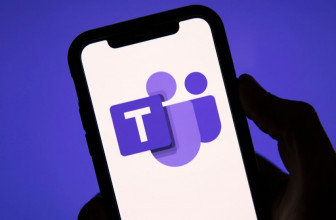
Or Just go on the Internet and type in "best $800 PC build" or if you have the amount of cash that a Mac Desktop costs you can buy a decent GPU like a GTX 980 and a 1440p screen that absolutely blows most Mac screens away.
Get work done, as a developer that used to use Mac's I find that amusing. Since Windows 7 we haven't had the good old blue screens and Windows is actually more reliable in many cases and a 3rd cheaper at least (my friends 21.5" Mac keeps hanging, 8gb is 2 little ram for proper work you can upgrade obviously at a price).
Saying a Mac is better then a windows pc or "does work better" is like saying that Windows on a mobile device is good. Then again if you are into music or art it makes perfect sense, also the Laptops Apple makes are pretty nifty even if a bit of a premium.
Most of a Macs components are factory basic, GPU is basic, it has basic ram and a normal HDD/SSD.
GTX 980 is 500 bucks so that could be a bit hard I will admit, but a $1000 pc with a GTX970, i7 and 24" 1440 display is possible (better then crappy HD5000 graphics).
Tell me how you can build a CONSISTENT PC with a GTX 980 and a 1440p screen for $800.
(When i say "consistent", i mean don't tell me to get a GTX980 and then a basic HDD/power supply/motherboard/RAM)
Or I buy the Mac and get a quality box that runs Mac OS, Windows and Linux. Some people just want to get work done. For gaming, sure. I've built several gaming rigs over the years. For everything else (coding, art, web dev hobby, writing) I use the Mac.
What Mac comes with a GTX 980? Oh wait…NONE OF THEM. The Mac Pro comes closest with dual AMD FirePro's but it's $3000 for the base model and doesn't come with a screen. Build a $3000 PC and you can get a Titan X, 4TB of hard drive space, 16GB of RAM and an 8 core Intel i7.
Hackintosh, nuff said. My PC was compatible right out of the box and destroys the Mac Pro.